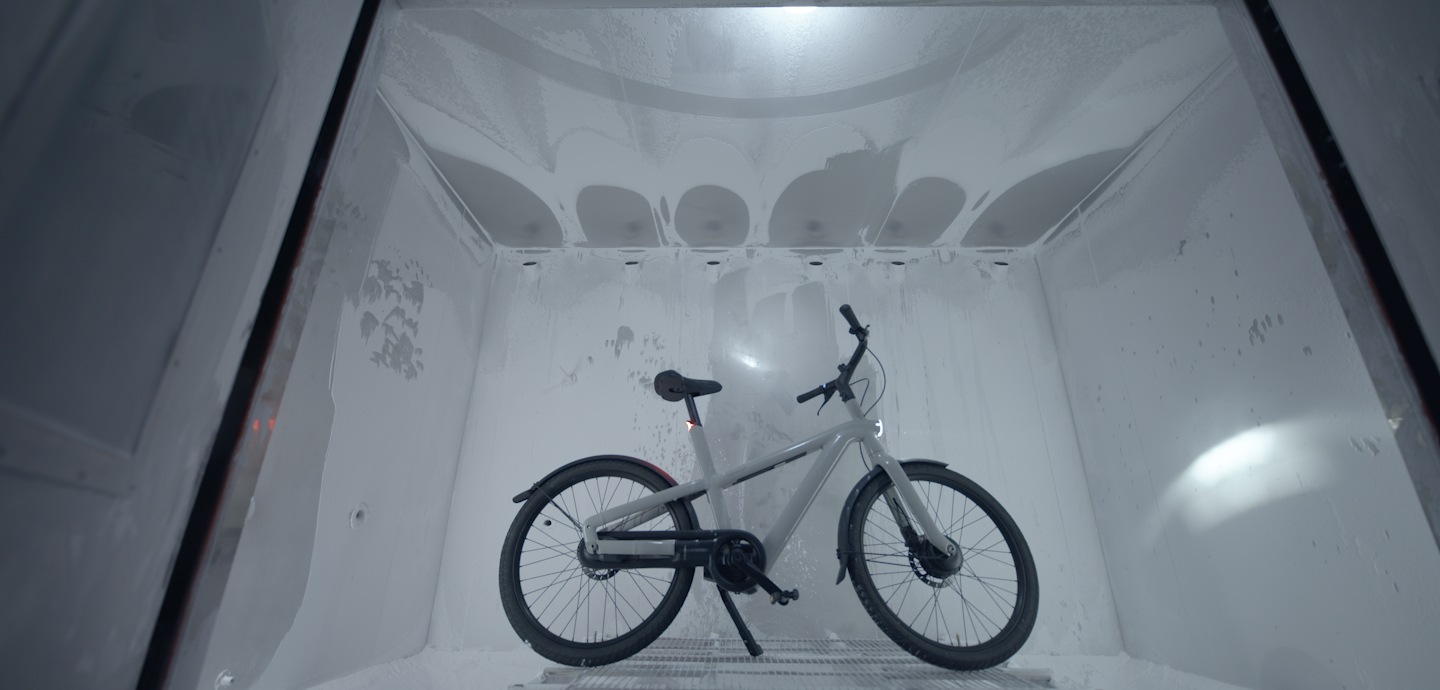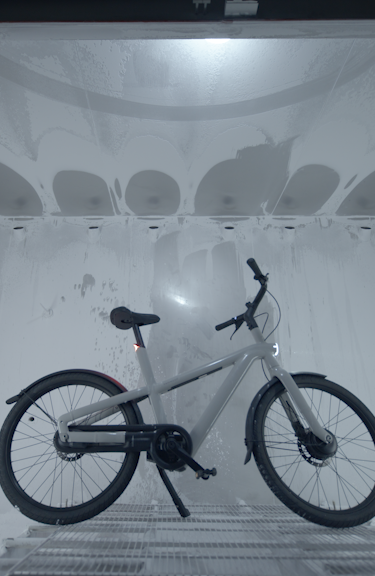This is how you'll roll


We subject our e-bikes to 39 litres of water every minute at extremely high water pressure to make sure their electric components remain safe and dry whatever the weather.
We place our bikes’ components in a 70℃ heat chamber for 72 hours straight. That way we know they can cope on the hottest day of the year, wherever in the world that may be.
We place the bike frames – without any of the tech inside – in a -40℃ chamber for 72 hours. Once the ice has melted away, we test the frames to make sure they’re as strong as ever.
So our bikes are prepared for any length of journey, we run them over 200 km of uneven terrain at 25 km/h. That’s Amsterdam to Brussels. Without a pit stop.
To make sure airborne particles won’t affect the performance of our bikes, we lock them in a chamber and create our own confined storm that weathers on for 8 hours.
Our e-bikes need to be able to handle the rough and tumble of a busy city. That’s why we strap them to a vibration plate at three different axes and subject them to extreme shocks that go on continuously for 36 hours.
¹39 litres of water per minute at 689 kPa, beyond regulation JIS D 0203 2S
²70℃ for 72 hours, beyond regulation EN 60068-2
³-40℃ chamber for 72 hours, beyond regulation EN 60068-2
⁴200 km at 25 km/h , beyond regulation ISO 4210 Annex A
⁵18.24 kg of dust over 8 hours, IEC 60529, IP5X
⁶3 axes for 36 hours at 24.9 m/s2, beyond regulation DIN 79009



